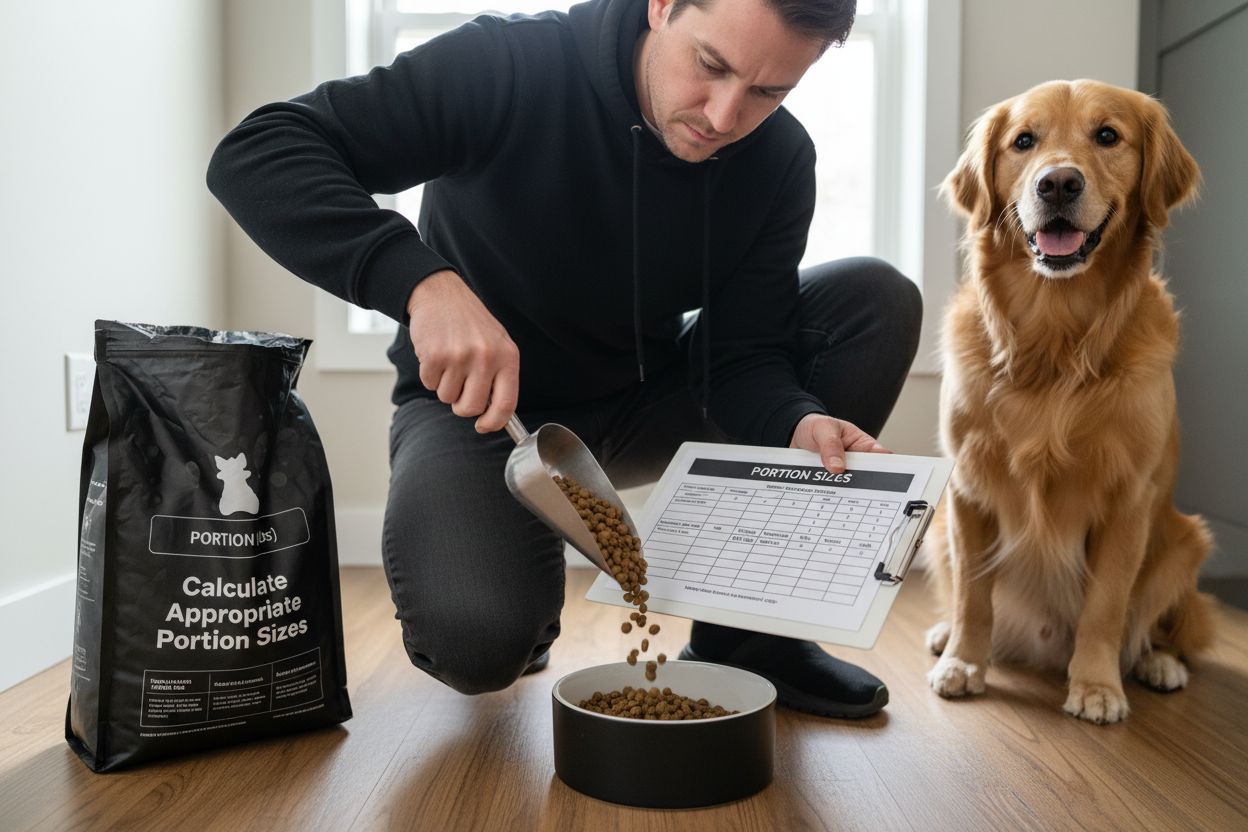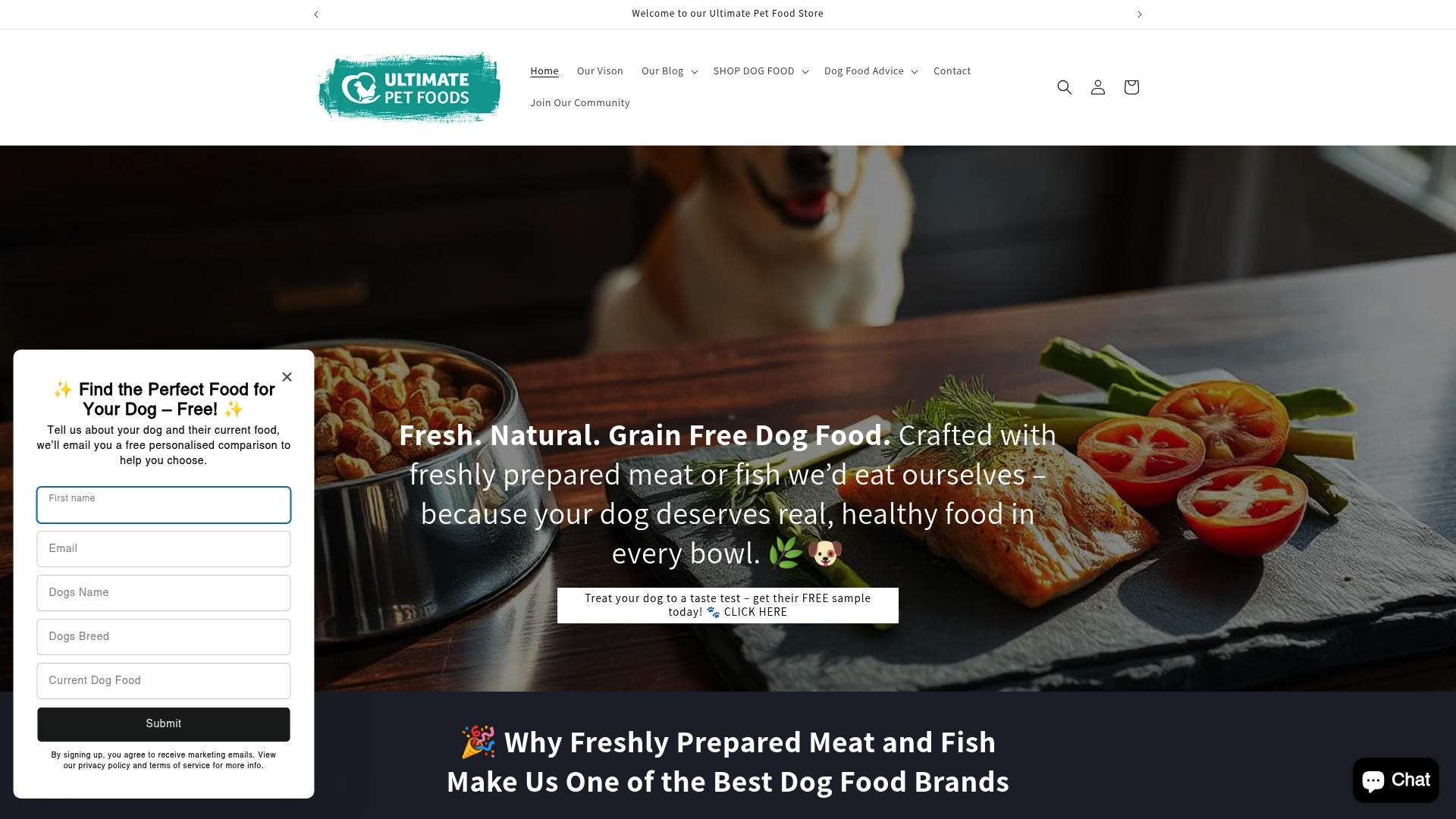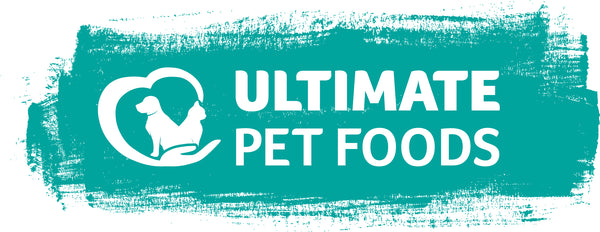
Master Dog Food Portion Control for Optimal Nutrition
Share
Feeding your dog the right amount of food can be tougher than it sounds. Some dogs can gain or lose weight rapidly and it only takes a small portion change to make a huge difference. But did you know that measuring by cups instead of grams could lead to wildly inaccurate servings and even long-term health problems? Swapping to a digital kitchen scale is the simple trick that could transform both your dog’s waistline and their well-being.
Table of Contents
- Step 1: Assess Your Dog’s Dietary Needs
- Step 2: Choose a Suitable Dog Food Option
- Step 3: Calculate Appropriate Portion Sizes
- Step 4: Implement a Regular Feeding Schedule
- Step 5: Monitor Your Dog’s Weight and Health
- Step 6: Adjust Portions as Necessary
Quick Summary
| Key Point | Explanation |
|---|---|
| 1. Assess your dog’s dietary needs | Consult your vet to understand your dog’s unique nutritional requirements based on age, breed, and health. |
| 2. Choose high-quality dog food | Opt for fresh, human-grade ingredients that support nutritional integrity and gut health. |
| 3. Calculate precise portion sizes | Use a digital scale for accurate food measurements, considering body weight and activity level. |
| 4. Implement a regular feeding schedule | Establish consistent feeding times to support your dog’s digestive health and prevent overeating. |
| 5. Monitor and adjust as necessary | Regularly track your dog’s weight and health, making gradual adjustments to food portions as needed. |
Step 1: Assess Your Dog’s Dietary Needs
Understanding your dog’s specific dietary requirements is the foundational step in mastering dog food portion control. Every canine companion has unique nutritional needs influenced by factors such as age, breed, weight, activity level, and overall health status. This assessment phase is critical for developing a precise feeding strategy that supports optimal nutrition and prevents potential health complications.
Begin by gathering comprehensive information about your dog’s current health profile. Schedule a consultation with your veterinarian to conduct a thorough physical examination and discuss your dog’s specific nutritional requirements. During this assessment, your vet can help you determine critical metrics like ideal body weight, body condition score, and potential breed-specific dietary considerations. For instance, large breed dogs have different metabolic needs compared to smaller breeds, and senior dogs require different nutritional support than young, active puppies.
Calculating Precise Nutritional Needs
To calculate accurate portion sizes, you will need to consider several key measurements. Body weight serves as the primary baseline for determining appropriate food quantities. Most high-quality dog foods provide feeding guidelines based on weight ranges, but these are general recommendations. For more precise portioning, you must account for your dog’s metabolic rate, activity level, and specific health conditions.
A comprehensive nutritional assessment typically involves measuring your dog’s body condition score on a scale from 1 to 9, where 4 to 5 represents an ideal weight. This involves visually and physically evaluating your dog’s body composition, checking for visible waistline definition and feeling the ribs without excessive fat covering. If your dog falls outside the ideal range, portion control becomes even more critical.
Read our expert guide on choosing the right dog food to complement your nutritional assessment and ensure you’re selecting a diet that matches your dog’s specific requirements. By taking a methodical approach to understanding your dog’s dietary needs, you’ll be well-positioned to implement an effective portion control strategy that supports long-term health and vitality.
The table below summarises the essential tools and resources referenced in the article, helping you implement precise dog food portion control at home.
| Tool/Resource | Purpose | Notes |
|---|---|---|
| Digital kitchen scale | Accurate measurement of dog food portions | Preferred over cups for precision |
| Fresh, human-grade dog food | Ensures optimal nutrition and digestibility | Gently cooked to retain nutrients |
| Veterinary consultation | Evaluates dog’s health profile and needs | Establishes baseline for individualisation |
| Feeding vessel | Consistent food delivery at mealtimes | Same bowl helps establish routine |
| Measuring cup | For comparison; less accurate than digital scales | Not recommended for precise control |
| Feeding schedule | Maintains regular mealtimes | Prevents overeating and digestive issues |
| Nutrition label/info | Reference for baseline feeding guidelines | Use as a starting point, adjust as needed |
Step 2: Choose a Suitable Dog Food Option
Selecting the right dog food is a critical decision that directly impacts your dog’s health, energy levels, and overall nutritional balance. After assessing your dog’s dietary needs, you must navigate the complex landscape of available dog food options with careful consideration and informed decision making. The goal is to find a nutritionally complete food that meets your dog’s specific requirements while providing optimal portion control.
Start by examining the primary characteristics of high-quality dog food. Fresh, human-grade ingredients should be your primary focus, looking for options that feature freshly prepared meat or fish. Seek out foods that are gently cooked at low temperatures to preserve nutritional integrity. Our freshly prepared kibble is gentle cooked at 82°C, which helps lock in essential nutrients and freshness. This cooking method ensures that proteins remain bioavailable and essential vitamins are not destroyed during processing.
Evaluating Nutritional Components
Carefully review the ingredient list and nutritional profile of potential dog foods. Prebiotic ingredients like MOS and FOS are particularly important, as they support digestive health and promote beneficial gut bacteria. These specialized prebiotics help maintain a balanced digestive system, which is crucial for nutrient absorption and overall wellness. Dogs with sensitive stomachs or those prone to digestive issues will particularly benefit from foods containing these targeted prebiotic elements.
Learn how to read dog food ingredients like an expert to ensure you are making the most informed choice possible. When comparing different dog food options, consider factors beyond just protein content. Look for balanced nutrition that includes appropriate levels of proteins, fats, carbohydrates, vitamins, and minerals tailored to your dog’s specific life stage and health requirements. A comprehensive approach to food selection will set the foundation for successful portion control and optimal canine nutrition.
Step 3: Calculate Appropriate Portion Sizes
Calculating precise portion sizes represents the cornerstone of effective dog food management, transforming general nutritional guidelines into a personalised feeding strategy. This crucial step bridges the gap between understanding your dog’s dietary needs and implementing a structured feeding routine that supports optimal health and weight management.
Begin by consulting the specific feeding guidelines printed on your dog food packaging. These recommendations typically provide baseline portion suggestions based on your dog’s weight. However, these are general guidelines and should not be followed blindly. Body weight, metabolism, activity level, and age are critical factors that will influence the exact quantity of food your dog requires. For instance, a highly active working dog will need significantly more calories compared to a senior dog with limited mobility.
Precision Measurement Techniques
To achieve accurate portioning, invest in a digital kitchen scale that allows you to measure food in precise gram increments. Volumetric measurements like cups can be inconsistent due to variations in kibble size and density. Digital scales provide consistent, precise measurements that ensure your dog receives exactly the right amount of nutrition. A good practice is to weigh your dog’s daily food portion and divide it into two or three smaller meals to support steady metabolism and prevent digestive issues.

Check out our expert tips for transitioning dog foods successfully to understand how gradual portion adjustments can help your dog adapt to new feeding routines. Remember that portion control is not a static process but a dynamic one that requires regular monitoring and adjustment. Regularly assess your dog’s body condition, weight, and energy levels, and be prepared to make incremental changes to maintain their ideal nutritional balance.
By approaching portion control as a nuanced, personalised strategy, you’ll support your dog’s long-term health and vitality.
Step 4: Implement a Regular Feeding Schedule
Establishing a consistent feeding schedule is fundamental to successful dog food portion control. This step goes beyond simply measuring food, focusing on creating a structured routine that supports your dog’s metabolic health, digestive function, and overall nutritional balance. A regular feeding schedule helps regulate your dog’s hunger, energy levels, and digestive processes, preventing overeating and maintaining optimal body condition.
Most adult dogs thrive on a twice-daily feeding routine, typically once in the morning and once in the evening. Consistency is key in this approach. Choose specific times that align with your daily schedule and stick to them as closely as possible. This predictability helps regulate your dog’s digestive system, reduces anxiety around mealtimes, and makes portion control more manageable. Puppies and senior dogs may require different feeding frequencies, so consult with your veterinarian to determine the most appropriate schedule for your specific dog.
This table provides a quick comparison of common feeding schedule options mentioned in the article, outlining their application, typical frequency, and suitability for different dog life stages.
| Feeding Schedule Type | Typical Frequency | Suitable for | Key Advantages |
|---|---|---|---|
| Twice-daily meals | Morning & evening | Most adult dogs | Supports metabolism and weight control |
| Three daily meals | Morning, midday, evening | Puppies, some active dogs | Supports steady growth and energy levels |
| Free feeding | Food always available | Not recommended, some puppies | May cause overeating or obesity |
| Variable by advice | As vet recommends | Senior, unwell, or special needs dogs | Tailored to individual requirements |
Managing Feeding Challenges
Implementing a regular feeding schedule requires commitment and strategic planning. Place your dog’s food bowl in a quiet, consistent location away from high-traffic areas to minimise distractions during mealtimes. Use the same feeding vessel each time to help your dog understand routine and expectations. Avoid free feeding, which means leaving food out continuously, as this can lead to overconsumption and weight management issues. Instead, provide measured portions for a specific duration, typically 15-20 minutes, then remove any uneaten food.
Learn expert tips for transitioning dog foods successfully to help you maintain consistency during dietary changes. Track your dog’s response to the new feeding schedule by monitoring their weight, energy levels, and overall enthusiasm during mealtimes. Be prepared to make subtle adjustments as needed, understanding that each dog is unique and may require personalised fine-tuning to achieve optimal nutritional balance.
Step 5: Monitor Your Dog’s Weight and Health
Monitoring your dog’s weight and health is the critical final step in mastering dog food portion control. This ongoing process transforms portion management from a static calculation into a dynamic, responsive strategy that adapts to your dog’s changing nutritional needs. Regular assessment ensures that your carefully planned feeding approach continues to support your dog’s optimal health and well-being.
Begin by establishing a consistent weight tracking routine. Weigh your dog monthly using the same scale, preferably at the same time of day and under similar conditions. Look for subtle changes in body composition, not just total weight. A healthy dog should maintain a consistent body condition score, where you can feel their ribs without excess fat covering and observe a visible waistline when viewed from above.
 Sudden weight fluctuations can indicate potential health issues or the need for dietary adjustments, making these monthly check-ins crucial for early detection of potential problems.
Sudden weight fluctuations can indicate potential health issues or the need for dietary adjustments, making these monthly check-ins crucial for early detection of potential problems.
Comprehensive Health Monitoring
Beyond weight, observe your dog’s overall health indicators. Energy levels, coat quality, digestive regularity, and muscle tone provide valuable insights into nutritional effectiveness. Signs of optimal nutrition include a glossy coat, consistent energy, firm stools, and maintaining a stable, healthy weight. Pay attention to changes in eating patterns, water consumption, and general activity levels. These subtle indicators can signal whether your portion control strategy needs refinement.
Discover our comprehensive guide on how much to feed your dog naturally to support your ongoing health monitoring efforts. Remember that portion control is not a one-time achievement but a continuous process of observation, adjustment, and care. Consult with your veterinarian annually or whenever you notice significant changes in your dog’s health or behaviour. By maintaining a proactive and attentive approach, you’ll ensure your dog receives precisely the nutrition they need to thrive.
Step 6: Adjust Portions as Necessary
Adjusting dog food portions is a dynamic process that requires continuous attention and responsiveness to your dog’s evolving nutritional needs. Life stages, activity levels, health conditions, and metabolic changes demand a flexible approach to portion control. What works perfectly for your dog today might require modification in the coming months or years, making adaptability a crucial skill in maintaining optimal canine nutrition.
Seasonal and lifestyle changes significantly impact a dog’s nutritional requirements. During winter months, dogs might become less active and require fewer calories, while summer activities could increase their metabolic demands. Working dogs, senior pets, and those recovering from illness or undergoing medical treatments need particularly nuanced portion management. Pay close attention to subtle shifts in your dog’s body condition, energy levels, and overall health as indicators that portion adjustments might be necessary.
Strategic Portion Modification
When considering portion adjustments, implement changes gradually and systematically. Reduce or increase daily food quantities by small increments, typically 5-10% at a time, to prevent digestive disruption and allow your dog’s metabolism to adapt. Precise tracking is essential during this process. Document weight changes, monitor body condition scores, and observe your dog’s energy levels and overall well-being. Some dogs might require more frequent adjustments, while others maintain consistent nutritional needs for extended periods.
Learn more about creating the perfect dog feeding schedule to support your portion control strategy. Remember that portion adjustment is not just about quantity, but also about understanding your dog’s unique metabolic profile. Consulting with your veterinarian during significant life stage transitions can provide professional guidance tailored to your dog’s specific health requirements.
Take the Guesswork out of Dog Food Portion Control
Are you struggling to find the perfect balance for your dog’s meals? Mastering portion control is essential, especially if you want to avoid weight gain, digestive issues, and nutritional gaps. Each step in your journey towards optimal nutrition requires food that truly meets your dog’s unique needs—whether you are looking after an energetic puppy or caring for a senior companion. Feeding guidelines can be confusing, but choosing high-quality, grain-free recipes made with fresh ingredients makes managing portion sizes easier and more effective.
Explore our high-quality grain free dog food for optimal health

Transform your feeding routine today. Shop at Ultimate Pet Foods for tailored nutrition solutions and discover how simple, natural choices can support portion perfection at every life stage. Take the first step towards a healthier, happier dog by switching to expert-backed food now.
Frequently Asked Questions
How can I assess my dog’s dietary needs for portion control?
Understanding your dog’s dietary needs begins with a veterinary consultation to evaluate their health profile. Gather information on your dog’s ideal body weight, body condition score, and any breed-specific dietary considerations to create a tailored feeding strategy.
What factors should I consider when calculating my dog’s food portions?
Key factors for calculating your dog’s food portions include body weight, metabolic rate, activity level, and age. Use accurate measurements, such as a digital kitchen scale, to determine food quantities and make adjustments based on your dog’s unique requirements.
What is the ideal feeding schedule for my dog?
Most adult dogs thrive on a twice-daily feeding schedule, ideally in the morning and evening. Decide on consistent times that fit your daily routine to help regulate your dog’s metabolism and prevent overeating.
How do I know if my dog needs a portion adjustment?
Monitor your dog’s weight, body condition score, and overall health indicators regularly. If you notice significant changes like weight fluctuations or variations in energy levels, adjust food portions gradually, typically by 5-10% at a time, to meet their evolving needs.
What role do prebiotic ingredients play in dog food portion control?
Prebiotic ingredients support your dog’s digestive health, helping to maintain a balanced gut microbiome. Look for dog foods that contain prebiotic elements to enhance nutrient absorption, which is crucial for optimal nutrition and effective portion control.
How can I effectively transition my dog to a new food while maintaining portion control?
To transition your dog to a new food, gradually mix the new food with their current diet over 7-10 days. Start with a small percentage of the new food, increasing it while monitoring their health and adjusting portions as necessary to ensure they adapt smoothly to the new feeding routine.
Recommended
- How Much to Feed Dog: A Complete Guide to Nutrition – Ultimate Pet Foods
- Create the Perfect Dog Feeding Schedule for Optimal Health – Ultimate Pet Foods
- Understanding Senior Dog Nutrition for Healthier Pets – Ultimate Pet Foods
- Understanding Life Stage Dog Food: Nutrition by Age – Ultimate Pet Foods
